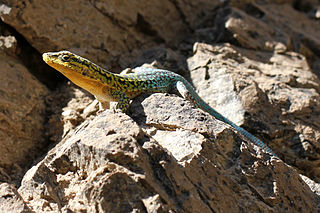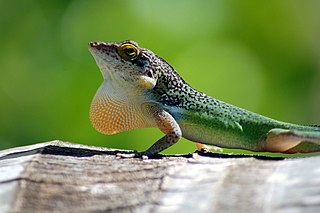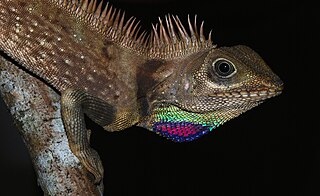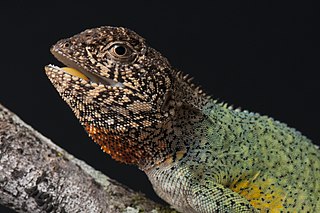
Homonota is a genus of South American geckos, commonly known as marked geckos.

Liolaemus is a genus of iguanian lizards, containing many species, all of which are endemic to South America.

Phymaturus is a genus of iguanian lizards of the family Liolaemidae, a family which was traditionally included in the Iguanidae as a subfamily, but more recently was proposed to warrant family status in the Liolaemidae. Phymaturus is the mid-sized genus of its family, with 50 species altogether known as of 2021; new species are still being discovered, however.

Diploglossus is a genus of New World diploglossid lizards, with ten described species, commonly known as galliwasps.

Alcide Charles Victor Marie Dessalines d'Orbigny was a French naturalist who made major contributions in many areas, including zoology, palaeontology, geology, archaeology and anthropology.

Monilesaurus rouxii, commonly known as Roux's forest lizard, Roux's forest calotes, or the forest blood sucker, is a species of arboreal, diurnal, agamid lizard, which is endemic to hills of peninsular India. In July 2018, it was proposed that the species should be transferred to the new genus Monilesaurus.

Psammophis is a genus of snakes in the family Psammophiidae. The genus comprises 33 species, which are found in Africa and Asia. Psammophis are diurnal and prey on lizards and rodents which they actively hunt. All species in the genus are venomous, and the venom is considered mild and not dangerous to humans.

The Martinique curlytail lizard is an extinct species of lizard in the family of curly-tailed lizard (Leiocephalidae).

Stenocercus is a genus of South American lizards, commonly called whorltail iguanas, of the family Tropiduridae. This genus has 80 valid described species.

Anolis leachii, the Antigua Bank tree anole, Barbuda Bank tree anole, or panther anole, is a species of anole, a lizard in the family Dactyloidae. The species is endemic to the Caribbean.

The white-lipped mud turtle is a species of mud turtle in the family Kinosternidae. The species is endemic to Central America and northwestern South America.

Apostolepis is a genus of snakes in the subfamily Dipsadinae. However, the familial placement differs among sources. It has also been placed in the family Colubridae, subfamily Dipsadinae or Xenodontinae, or in the family Xenodontidae. The genus Apostolepis is endemic to South America.
Pseudoboodon is a genus of snakes in the family Lamprophiidae. The genus is endemic to Africa.

Gonocephalus bellii, commonly known as Bell's anglehead lizard or Bell's forest dragon, is a species of lizard in the family Agamidae. The species is native to Southeast Asia and Oceania.
Contomastix is a genus of lizards in the family Teiidae. The genus is endemic to South America.

Enyalius is a genus of lizards in the family Leiosauridae. The genus is native to Brazil and Uruguay.

The Rio Grande worm lizard is a species of worm lizard in the family Amphisbaenidae. The species is endemic to Brazil.
Urostrophus is a genus of lizards belonging to the family Leiosauridae.
Leiosaurus catamarcensis is a species of lizard in the family Leiosauridae. It is native to Argentina.















